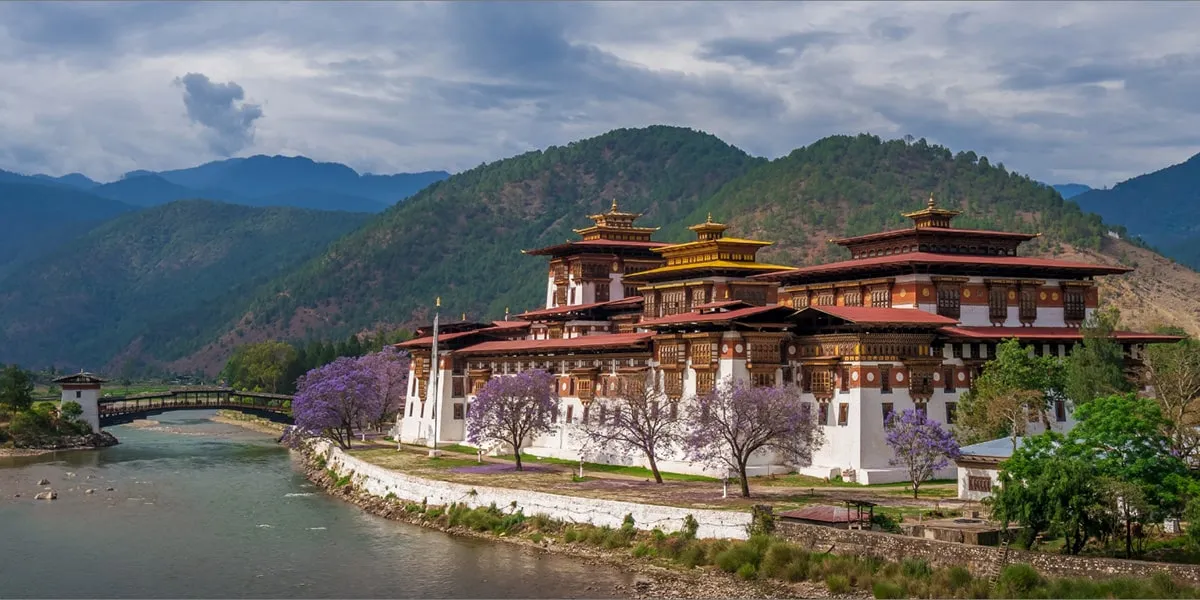Bhutan's Architectural Marvels: Exploring the Traditional Dzongs
Bhutan's dzongs are fortress-monasteries, blending administrative and spiritual functions, showcasing rich cultural heritage through impressive architecture and vibrant festivals.
Bhutan, often referred to as the "Land of the Thunder Dragon," is renowned for its unique and traditional architecture, which reflects its rich cultural heritage and spiritual roots. Among its architectural marvels, the dzongs stand out as iconic symbols of Bhutanese identity. These massive fortress-monasteries are not only stunning in their construction but also integral to the country's administrative and religious life.
What is a Dzong?
A dzong is a distinctive type of fortress architecture found primarily in Bhutan and to some extent in Tibet. These structures serve dual purposes: they house both administrative offices and monastic institutions. Strategically located on hilltops or at river confluences, dzongs are designed to be both imposing and functional, with thick defensive walls, courtyards, temples, and living quarters.

Historical Significance
Dzongs have played a crucial role in Bhutanese history, often serving as fortresses to defend against invasions and as centers of governance. The construction of dzongs was particularly prominent in the 17th century under the leadership of Zhabdrung Ngawang Namgyal, the unifier of Bhutan. His vision for these fortresses was to consolidate political power and to protect the burgeoning Buddhist state from external threats.
Architectural Features
- Massive Stone Walls: Dzongs are characterized by their massive, tapering walls made of stone and clay. These walls are often whitewashed and feature intricate wooden details.
- Central Tower (Utse): At the heart of each dzong stands the utse, a central tower that is often the tallest structure within the fortress. The utse serves as the main temple and houses relics and important religious artifacts.
- Courtyards and Assembly Halls: Dzongs are built around one or more courtyards, which are used for various ceremonies and public gatherings. The main assembly hall, or tshokhang, is a key feature where monks gather for prayers and rituals.
- Ornate Decorations: Despite their fortress-like appearance, dzongs are adorned with intricate woodwork, colorful paintings, and gilded roofs, reflecting Bhutanese artistic traditions and religious motifs.
Notable Dzongs in Bhutan
- Paro Dzong (Rinpung Dzong): Overlooking the Paro Valley, this dzong is one of Bhutan's most iconic landmarks. It is known for its impressive architecture and the annual Paro Tsechu festival, which attracts thousands of visitors.
- Punakha Dzong (Pungthang Dewachen Phodrang): Located at the confluence of the Pho Chhu and Mo Chhu rivers, Punakha Dzong is renowned for its stunning location and historical significance. It served as the capital of Bhutan until the mid-20th century.
- Thimphu Dzong (Tashichho Dzong): Situated in the capital city, this dzong houses the throne room and offices of the king, as well as various government ministries. It is also the summer residence of the monastic body.
- Trongsa Dzong: Centrally located, Trongsa Dzong is a masterpiece of Bhutanese architecture, perched on a ridge overlooking the Mangde Chhu river. It has been a strategic stronghold and an important administrative center.
Cultural and Spiritual Importance
Dzongs are more than just architectural feats; they are centers of cultural and spiritual life in Bhutan. They host important religious festivals (tsechus), where masked dances and rituals are performed to honor Guru Rinpoche and other deities. These festivals are vibrant expressions of Bhutanese culture and attract both locals and tourists.
They encapsulate the essence of Bhutanese identity, blending spiritual, administrative, and defensive functions in a harmonious and visually captivating manner. Exploring these magnificent structures offers a glimpse into Bhutan's past and present, highlighting the nation's commitment to preserving its unique cultural legacy.
Visiting Bhutan's dzongs is a journey into the heart of a nation where tradition and spirituality are intricately woven into the fabric of everyday life, creating a timeless legacy that continues to inspire and awe.







